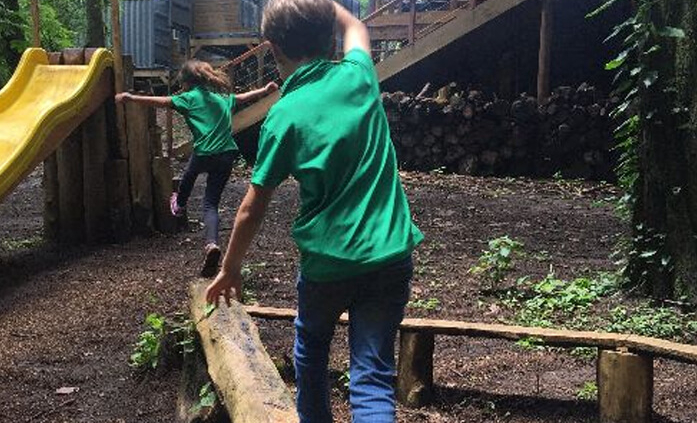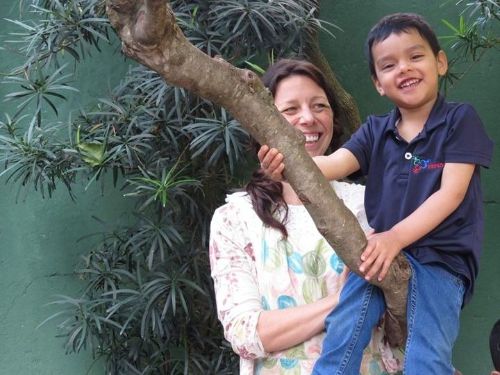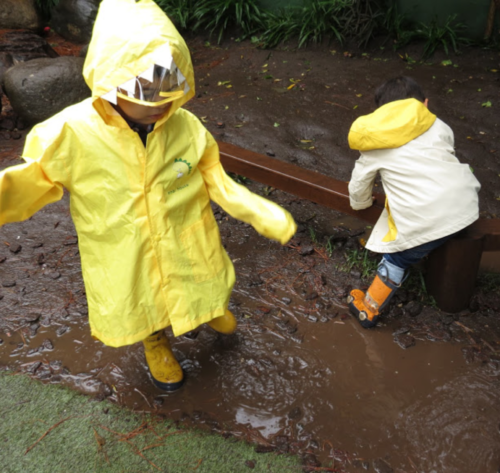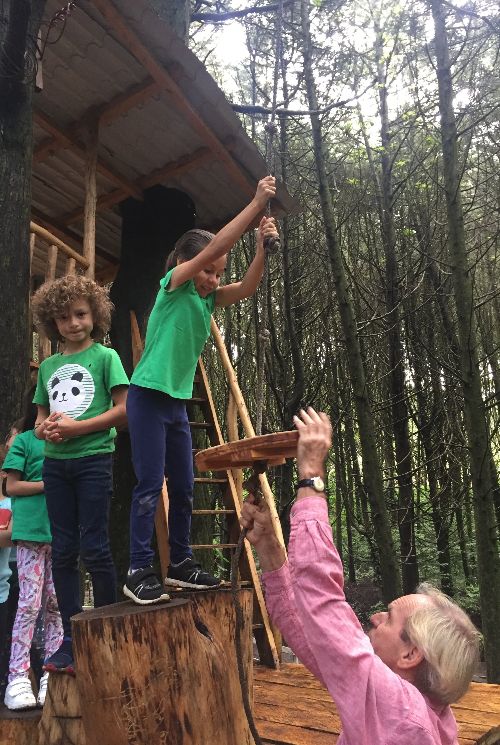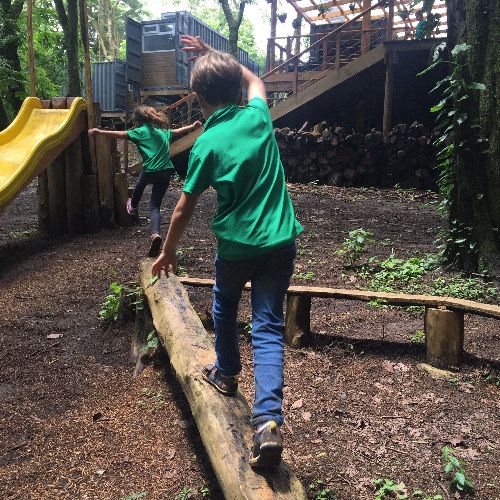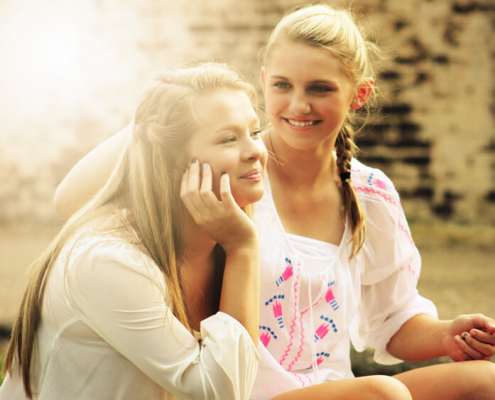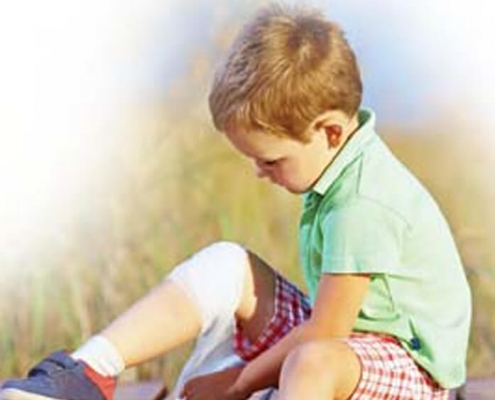Why Kids NEED Risky Play and How to Feel Safe Encouraging It!
Written by Avital from The Parenting Junkie
You hear it everywhere you turn, be careful you’re going to fall, be careful you’re going too fast, be careful you might slip… but is this concern over safety actually helping our children?
Here’s why kids not only love risky play but desperately NEED it and how you can keep your cool allowing them to take appropriate risks.
Everywhere we look our children seem to be drawn to risky activities. Where they see fun we see danger signs.
In our culture we try to make things more and more safe, to almost bubble wrap our children. We’ve made it so safe that playgrounds today have become quite boring. They are not the same “hold on tight” or you’ll literally fall off the merry-go-round playgrounds they once were. On the surface this seems good, no one wants to see kids get hurt. But, our kids are now missing out on the physical and mental strength gained through challenging, risky play.
Children develop by playing. They push themselves through play, socially, emotionally, academically, and physically. This healthy development prepares them for adulthood which comes with risk-taking. Adults have to drive a car, cook with fire, cut vegetables, invest in the stock market, etc. Kids prepare for this by taking risks as they play.
We can’t learn without pushing ourselves out of our comfort zone. Kids learn their body limits and develop coordination when they are allowed to take risks, especially outdoors.
In her book Balanced and Barefoot, Angela Hanscom, shares with us that one of the main reasons there’s a rise in sensory issues in children is due to their lack of time spent outdoors in free play. Only one in two children today have the same level of core strength and balance that children typically had back in 1984. There are also a lot of muscle control issues for children today. This is directly caused by the fact that children are sedentary in a seated and directed lifestyle.
Kids today aren’t climbing trees, swinging on the merry-go-round or hanging upside down on the monkey bars. We think that we’re protecting them but this uprightness of their lifestyle directed by adults is causing a whole host of other problems. Hanscom and her colleagues are seeing a huge increase in lack of balance, lack of attention, lack of emotional self-regulation and an increase in aggression in their patients. “These symptoms are due in part to underdeveloped motor and sensory skills, which leave children underprepared for academics and overwhelmed by daily life and social situations.” Physiologically, when we don’t use our bodies in other ways, other than just being upright, such as tumbling, rolling down a hill, spinning around, doing cartwheels, then we actually lose our abilities to do those things. The liquid in our inner ear actually thickens which is why as adults we find it much less comfortable to go upside down.
Now, of course, we should and must use common sense and law-abiding rules, when it comes to safety for our children. You know what’s best for your child, and of course, not all risks are appropriate for all ages and stages, by any means. But, perhaps, isn’t engaging in some risky and physically stretching activities, one very good tutorial for keeping them safe in the long run? If you’re cooking with fire, and you get a little burn, while it’s not what anyone wants, you’re very unlikely to make that mistake again.
Risky play hasn’t been weeded out via natural selection because it’s important for our children’s safety. If you never put a baby on the floor it’s going to be harder for them to learn to crawl and then eventually walk. Humans, like a few other mammals, have really long childhoods. Animals with longer childhoods need that time to play in order to develop the skills they will need as adults.
If you find yourself always cringing when your child is going to take a risk here are 3 ways to help your child take meaningful and reasonable risks:
When we see a child doing something we think is risky our go-to response is usually “be careful.” But is that actually helpful information to keep them safe? If the floor is slippery and we simply say “be careful” are we letting them know the floor is slippery? Instead of saying “be careful” ask your child “do you feel safe?” You could also share your own feelings; “I feel nervous about that trick you’re trying to do, can you talk me through your plan?”
Embrace the fact that risk is a part of life. There are risks associated with all aspects of life; driving, flying, cooking, etc. We need to keep our own anxieties in check around our children and not make them feel that the world is a dangerous place. You can say “I can’t watch but go for it, have fun.” Fear doesn’t lead to logical risk assessment and evaluation. What helps us is good information and confidence to try. Our children also learn by making mistakes and learning from those.
Actively look for places where your children can take risks. While this is rare in our culture there are places such as Adventure Playground in NYC where children can take more risks.
Great Heights
Allow children to climb high. You can walk behind them just don’t hover over them and make it seem like it’s the most dangerous thing they have ever tried.
Rapid Speeds
Put on the helmet, knee pads, elbow pads, find a safe place and let your children go as fast as they would like.
Dangerous Tools
Show children how to use real adult tools. Teach them how to be safe using the tool. Children want the satisfaction of using a real tool, not a toy. For younger kids, you can start them with plastic knives like these to learn how to cut before eventually allowing them to use a real regular knife.
Dangerous Elements –
Children are attracted to fire, smoke, water and we usually find ourselves saying, no, don’t touch. While we want to keep our children safe we also want to teach them how to master these elements. How to use fire safely. How to light a match. How to cook on a stove. How to stay safe in the water. If we avoid the elements our children will not learn how to be safe near them nor how to use them.
Rough and Tumble Play
Kids want to play rough and tumble. They want to have pillow fights and have play fights. In our culture we tend to say, no hands, no touching, no roughhousing, but kids need this type of play. We can allow our children to have this type of play with guidelines in place for when the play gets too rough.
Disappearing/Getting Lost
Whether it’s your toddler running into a crowd of people or you’re 12 year old wanting to go to school by themselves, kids are drawn to disappearing. This is not because they actually want to get lost but to disappear for a time. The rush they feel from being away from adult supervision for even a few moments. That’s why little kids love the game hide-and-seek, the thrill of being alone.
When children are allowed to take reasonable risks, they actually become safer.
Through the risks they take, they develop a better ability to assess risk, use critical thinking, and to troubleshoot when problems arise. All of the experience they’ve gained through this risky play leads them to trust in their own bodies and developing confidence and sure-footedness. This is how we raise children who are resilient.
By allowing kids to take risks we raise kids who are reasonable, thoughtful, mindful risk-takers, neither too timid nor too ballsy.

